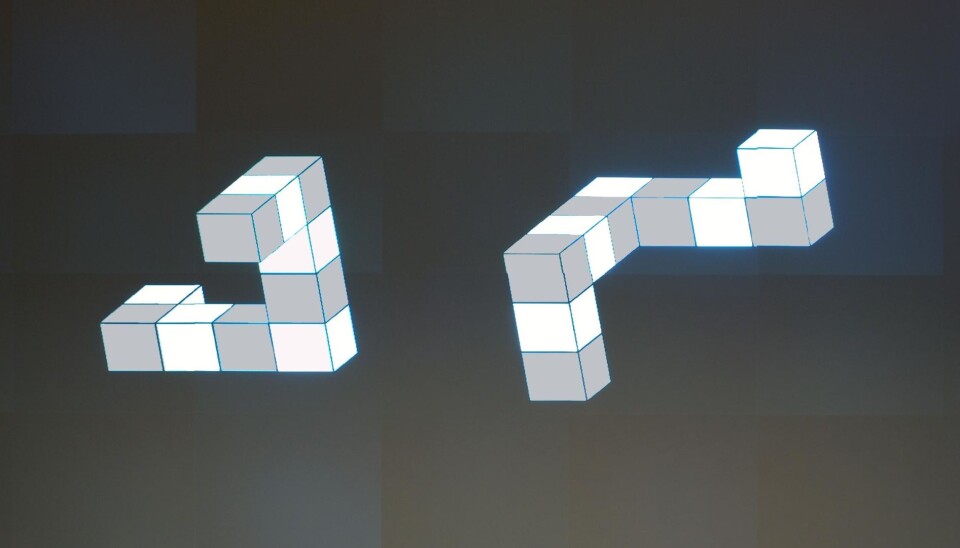An article from University of Tromsø – The Arctic University of Norway

When size matters
It’s generally thought that women are inferior to men when it comes to spatial awareness. But only one psychological test has shown this. And new research casts doubt on its merits.
Denne artikkelen er over ti år gammel og kan inneholde utdatert informasjon.
“There is only one cognitive spatial awareness test in which women have been inferior to men over time. And that’s the test of mental rotation,” says Bernt Ivar Olsen.
Olsen’s research has shown that women’s spatial awareness is not necessarily all that different from men’s. Differences that are detected may be explained by the way the test is conducted. In the course of completing his PhD in computer science, Olsen made some surprising discoveries about the mental rotation test.
This specific test is one of the oldest cognitive tests in use, and has been around since the 1970s. Mental rotation involves comparing three-dimensional objects. Test subjects are shown two objects and have to determine whether they are different or if one is a rotation of the other.
“It turns out that the bigger the screen is, the slower men are in solving these problems,” says Olsen.
He conducted two studies in collaboration with psychology professor Bruno Laeng.
“Psychology has employed modern technology to create tests that can teach us about how our brains solve problems. But now it is time to ask whether the technology itself has some implications for how we solve problems,” says Olsen.
Giant screen create failures
Olsen conducted his tests using both a conventional laptop and on the biggest screen he could find: A 230-inch display wall at the university’s Department of Informatics. With 22 million pixels, this is certainly a dream screen for some men. But given Olsen’s results, the size is perhaps not something men should cheer about.
“In previous tests men were both faster and more accurate in mental rotation. However, our findings were quite different. It turned out that women were unaffected by screen size in my experiment. The men’s performance, when tested on the big screen, deteriorated by 27 percent. They were still more accurate than women, but the rate went down considerably,” Olsen said.
Olsen’s finding may support the theory that men and women use different mental strategies to solve the mental rotation problem. Men often choose to rotate the object mentally and then make a comparison, in what is called a holistic strategy. Women choose to look at selected parts of the object and look for these variables when comparing the objects, an approach called a piecemeal strategy.
“The magnification of the object may also mean that men need more time to build the comparison mentally,” says Olsen.
Important for health workers
This may seem like interesting but unimportant information, perhaps of greatest importance to gamers who play shooters on the big screen. But Olsen explains that it can also be a life-or-death issue.
“People in radiology departments look at models of human organs on a monitor. When a doctor examines an X-ray, it is often only minimal differences that show whether a patient has cancer,” he says.
The fact that the screen size has a significant effect on men’s abilities to interpret information is important to know. Perhaps we need to invest in a comfortable size screens that provides maximum benefit and minimal inconvenience for both sexes.

































